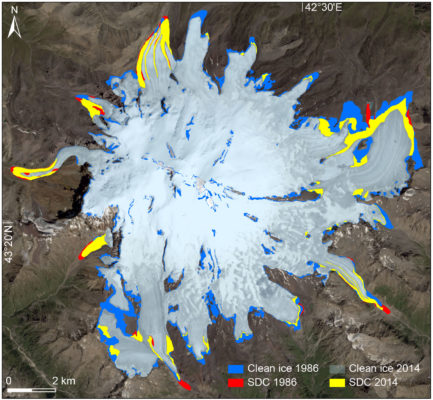
In this week’s blog, Levan Tielidze tells us about supra-glacial debris cover change for the Greater Caucasus. His recent study indicates more than a doubling in the area of supra-glacial debris cover for the Elbrus Massif‘s glaciers from 1986 to 2014, the largest glacierized massif in the whole region. Glaciers on the western slope of the Elbrus Massif are affected by avalanches and thus are partially debris-covered. But the most significant increase of supra-glacial debris cover occurred on the eastern oriented glaciers. Overall, supra-glacial debris cover increased from ~2% to ~4.5% on the Elbrus Massif between 1986 and 2014.
The Greater Caucasus
The Greater Caucasus is one of the world’s highest mountain systems, and the major mountain range of the Caucasus region. The Greater Caucasus contains over 2000 glaciers, adding up to a total area of about 1200 square kilometers, with many more glaciers located on the northern slopes than on the southern slopes (Tielidze and Wheate, 2018). To give you an idea of size, the glaciers of the Greater Caucasus are about four times the size of the Republic of Malta. The melting of the ice and snow contained in the Greater Caucasus’ glaciers represents a major source of fresh water for populated places in many parts of the Caucasus region.
Supra-glacial debris
Supra-glacial debris is the general term for the rocks, soil and dust found on the surface of glaciers, which come from rockfalls and avalanches (see a previous blog on features of supra-glacial debris covered glaciers here). Supra-glacial debris cover is an important control on the ice loss rate of glaciers, and therefore an important component of the glacier mass balance in this region (mass balance is the total net gain or net loss of mass of a glacier). Therefore, correctly estimating supra-glacial debris cover is important to correctly model future glacier evolution in the Greater Caucasus. Until now, studies had been restricted to smaller regions or individual glaciers in the Greater Caucasus, so there was a clear need to provide improved estimates of supra-glacial debris cover and its evolution for this region.
Satellite Imagery
A total of nine Landsat images were used in our study, in order to select nearly 700 glaciers, adding up to a total area of ~590 square kilometers. We also used the Shuttle Radar Topography Mission Digital Elevation Model (SRTM DEM) over our study area to evaluate the debris cover in 500 m altitude bands. The Landsat images were used to make an initial assessment of the supra-glacial debris cover and the SPOT-7 image was then used to correct supra-glacial debris cover over the Elbrus Massif specifically.
Debris cover change from 1986 to 2014
The largest glacier in the Greater Caucasus is the Bezingi Glacier. The area covered by supra-glacial debris for the Bezingi Glacier increased from ~11% to ~ 20% between 1986 and 2014. In contrast, there was a reduction in the total glacier area by ~6% during the same period, and the glacier tongue became ~374 m shorter (Fig.2). In comparison, the debris-free Karaugom Glacier (third largest glacier of the Greater Caucasus), located in the same region, shrank in length by ~18% (i.e. 1366 m shorter, Fig.2). This suggests that the debris-covered glaciers in the Greater Caucasus are not shrinking as quickly as the debris-free glaciers.
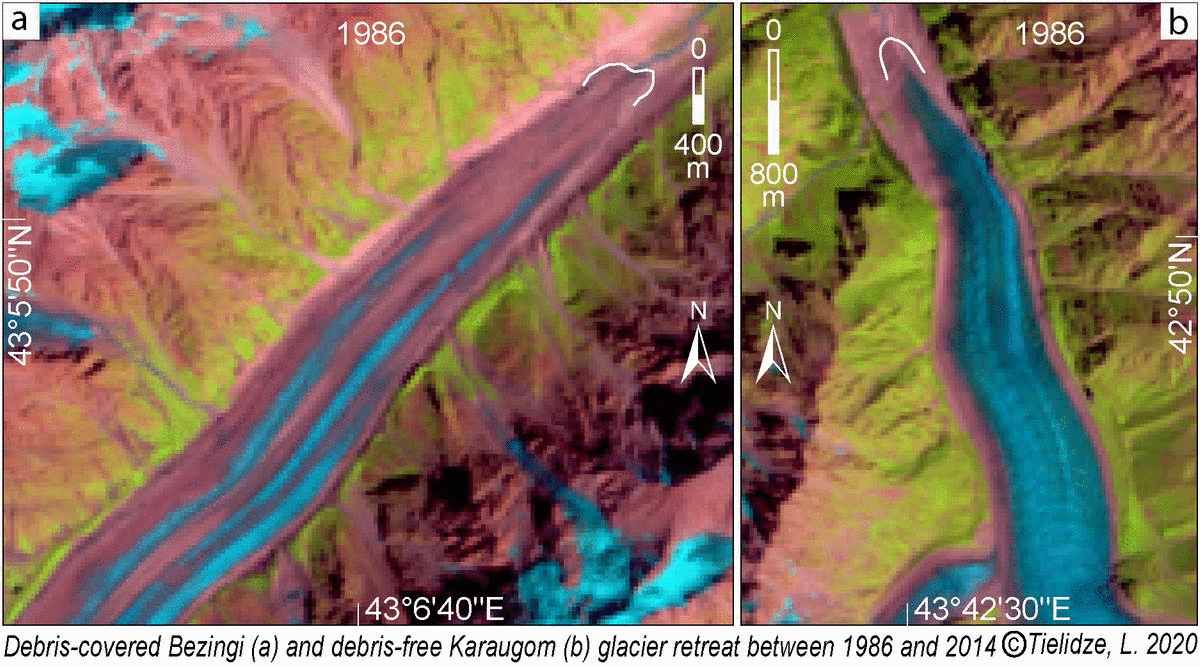
Figure 2: Debris-covered Bezingi and debris-free Karaugom glacier retreat in 1986-2014. Blue color corresponds to the glacier. White and yellow lines correspond to the glacier terminus in 1986 and 2014. A Landsat 5 image for 6/08/1986 and a Landsat 8 image for 03/08/2014 are used as background. Credit: Levan Tielidze.
The Elbrus Massif contained the smallest percentage of supra-glacial debris cover in our entire study region back in 1986. Since then, the debris-covered area more than doubled between 1986 and 2014. Between 1986 and 2014, the supra-glacial debris cover area was highest on the eastern slope of the Elbrus, while it was lowest on its western slopes. Over that same period, we observed that the glaciers located on the eastern slopes showed the strongest decrease in surface area while the glaciers on the western slope showed the weakest decrease in surface area (Fig.3). This confirms the importance of debris cover for reducing glacier loss.
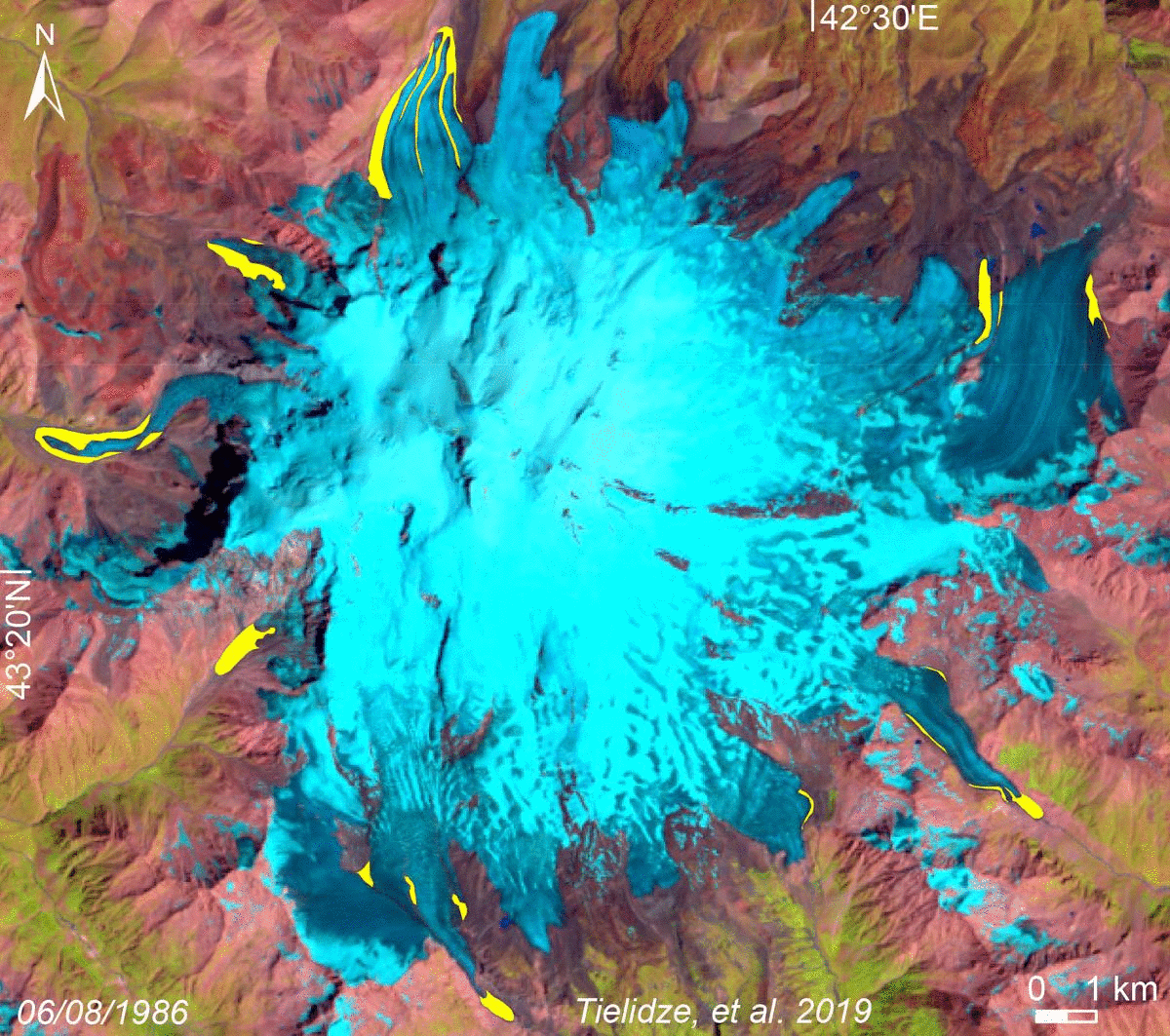
Figure 3: Total glacier area and supra-glacial debris cover area (in yellow) change on the Elbrus Massif between 1986 and 2014. A Landsat 5 image for 26/08/1986 and a SPOT-7 image for 20/08/2016 are used as background. Credit: Tielidze et al., 2020
Overall, we found an increase in supra-glacial debris cover for all investigated glaciers from ~7% in 1986 to ~13% in 2014. For all regions investigated in the Greater Caucasus, the area of supra-glacial debris cover increased, although the rate of increase varied between the western, central and eastern sections of the mountain range (Fig.4). The cause for this increase in supra-glacial debris cover is still being studied. It could be controlled by climate, lithology of the relief (i.e. the types of rock the relief is made of), as well as the different tectonic and ongoing mountain building (uplifting) processes.
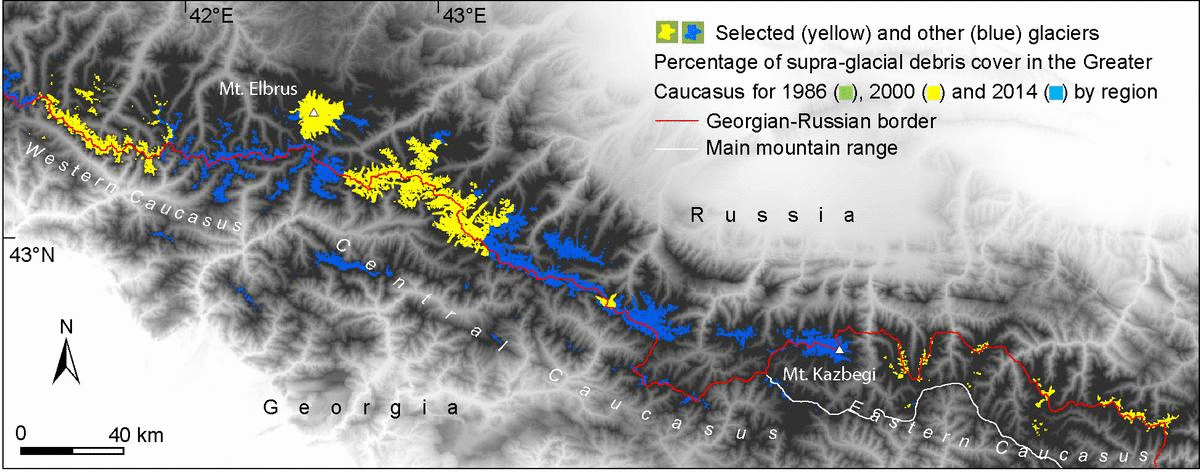
Figure 4: Study area with percentage change of supra-glacial debris cover in the Greater Caucasus by region. The SRTM DEM is used as background. Credit: Tielidze et al., 2020
The glaciers in the Greater Caucasus have retreated continuously since 1960, suggesting that the shielding effect of increased supra-glacial debris cover may only partially offset the glacier loss. Other glaciers in the world also show a similar behavior, such as the Zmuttgletscher, in the Swiss Alps (see this study) or the debris-covered and debris-free glaciers in the Himalayas (see this study).
Given the increasing supra-glacial debris cover in the Greater Caucasus region, and its effect on glacier response to climate change, close monitoring of the glaciers in this part of the world should continue. The recent observed increase in the supra-glacial debris cover area in this region may alter the mass balance of the glaciers, depending on debris thickness and properties. Feedbacks between the ice and the debris overlying it will certainly affect the future evolution of these glaciers and should be considered when modelling these glaciers in general.
Further reading
- Tielidze, L. G. (2016). Glacier change over the last century, Caucasus Mountains, Georgia, observed from old topographical maps, Landsat and ASTER satellite imagery. The Cryosphere, 10(2), 713-725, doi: 10.5194/tc-10-713-2016.
- Tielidze, L. G., & Wheate, R. D. (2018). The Greater Caucasus Glacier Inventory (Russia, Georgia and Azerbaijan). The Cryosphere, 12(1), 81-94, doi: 10.5194/tc-12-81-2018.
- Tielidze, L. G., Bolch, T., Wheate, R. D., Kutuzov, S. S., Lavrentiev, I. I., and Zemp, M. (2020). Supra-glacial debris cover changes in the Greater Caucasus from 1986 to 2014. The Cryosphere, 14, 585–598, doi.org/10.5194/tc-14-585-2020.
- EGU Cryoblog post: Debris-covered glaciers explained in the Himalayas
Edited by Jenny Turton
Levan Tielidze is a PhD student at Antarctic Research Centre and School of Geography, Environmental and Earth Sciences, Victoria University of Wellington. The field of his research is modern glaciers and glacial-geomorphological studies of the mountainous areas in the Quaternary (Late Pleistocene and Holocene). Contact email: tielidzelevan@gmail.com



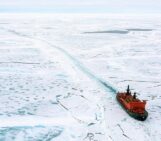

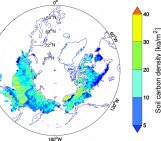
Eric Petersen
Very good work! Have you thought about rates of thinning on these glaciers as well as their rates of horizontal retreat/surface area change?
Levan Tielidze
Thanks, Eric
Very good question 🙂
Unfortunately, we were not able to measure the horizontal retreat rate in this research.
This may be a topic for future research…